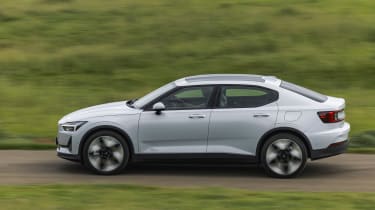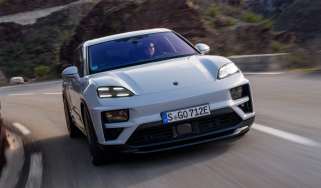Polestar 2 review – performance and 0-60 time
Acceleration is very punchy, but lacks the headline figures of top-tier Teslas
The Polestar 2’s performance is certainly all it needs to be to capture that impressive first impression of a well-endowed electric car – particularly with its newly updated powertrain. Even the single-motor feels hot hatch quick up to motorway speeds (0-62mph comes up in 6.2sec), and the extra power and four-wheel drive traction of the dual-motor version give it sports car beating pace, sprinting from 0-62mph in just 4.3sec. The Performance Pack shaves a further three tenths from that, and while no Polestar 2 offers the unhinged thrust of a Model 3 Performance, even the base car feels easily quick enough for every day duties.
There are no performance-enhancing driver modes within the Polestar’s interfaces, although drivers can choose one of three levels of regenerative braking which vary between a Nissan Leaf-like one-pedal driving characteristic that will bring you to a complete stop, and right through to a coasting level that has no regen until you hit the brakes.
But while performance is impressive, it’s always measured and under control in the four-wheel drive models. Even heavy throttle applications on broken surfaces don’t upset the Polestar 2’s composure, with seamless and trustworthy traction. Put it into its ESP Sport mode, and it’ll allow even more liberal applications of power from all four wheels, revealing an even clearer window into the impressive balance that’s been engineered into the chassis. The instant swell of torque can occasionally overwhelm the rear tyres in the single-motor layout, but it still feels controllable and intuitive.




